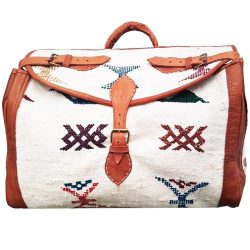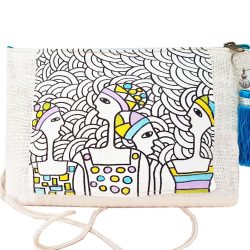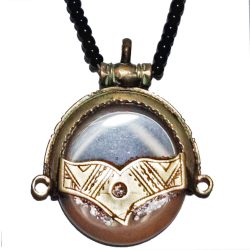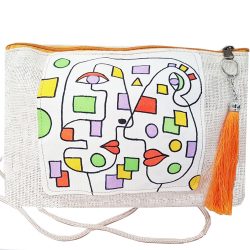Description
Moroccan Camel Leather Bag
This unique handbag is made of
leather from one of the oldest working tanneries in the world.
We hand source each and every bag
looking for aesthetic appeal, quality, and functionality.
Our artisans are masters in the field of their craft and deliver products that will last a lifetime.
Morocco, situated in North Africa is known for its high-quality arts and crafts.
It is there we draw great inspiration for made to order pieces and know that
the end product will always be amazing.
Our Moroccan bags speak of ancient traditions that span back thousands of years
within them ancient stories to tell of lands that once held kings and queens
and nomadic peoples that traveled distances on camels and roamed the desert
living in tents sipping on mint tea.
Morocco leather
(also known as Levant, the French Maroquin,
or German Saffian from Safi, a Moroccan town famous for leather) is a soft,
pliable form of leather widely used for gloves and the uppers of ladies’
shoes and men’s low cut shoes, but traditionally associated with
bookbindings, wallets, linings for fine luggage, and the like.
Originally Morocco leather was imported to Europe from Morocco,
and from the late 16th century it was valued in luxury bookbindings in
Western countries because of its strength and because it showed off the gilding.
It was also used in the Islamic world from an earlier date.
However, Morocco was often not the original source of leather.
Some of the highest quality Morocco leather, usually goat skin,
used in bookbinding was sourced from Northern Nigeria
The finest grades of Morocco leather are goatskin
but by the late 19th
century other skins often were substituted in practice, particularly sheepskin
and split calfskin. For example, French Morocco is a variety made of sheepskin.
The tanning process varied widely, but the traditional tanning material was sumac.
The traditional tanning process was skilled and elaborate; according to the application,
the preparation either would aim for a carefully smoothed finish or would bring
up the grain in various patterns such as straight-grained, pebble-grained, or in particular,
in a bird’s-eye pattern. Morocco leather is practically always dyed, traditionally
most often red or black, but green, brown or other colors also were available,
and in modern times there is no special constraint on color.






